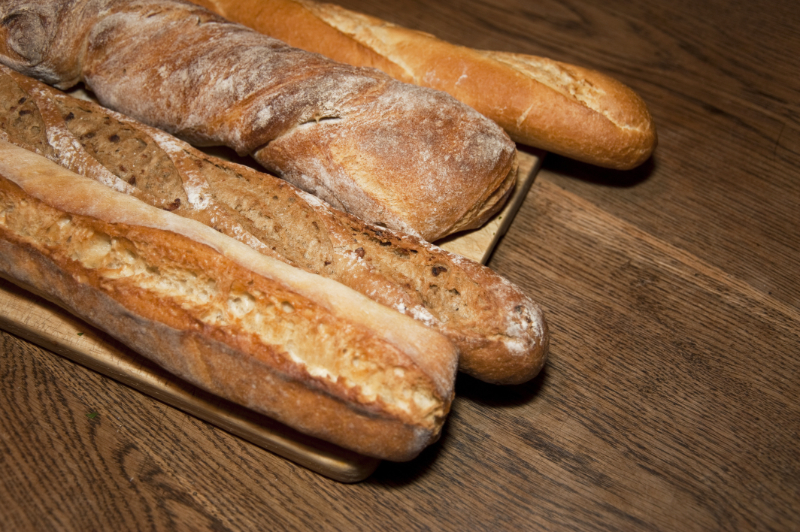Have you ever gone to your favorite bakery and ended up buying more than you can eat? Don’t fear, here are tips to keep your bread fresh longer.
Of all the bread topics I can imagine writing about, this is maybe the most dry, but definitely not stale. While there is nothing new or mysterious about what I am sharing here, I find that a lot of people don’t really know how to store bread (I have done it wrong too).
To clarify, these are recommendations on how to store traditionally produced bread (unsliced loaves) not produced with the many additives and dough conditioners that most store bought bread are made with. The following may still apply to store bought bread, but I really wouldn’t know.
What’s the best way to store bread? Sorry, but no newfangled kitchen gadget needed. The low tech, traditional way, is still the best, for example a bread box because of how it regulates temperature and humidity.
The right temp and humidity are important!
The ideal temperature to store the bread is about 18–22C/ 64–72F. And the best place is the kitchen at room temperature, or a cool place (in the summer), out of direct sun and away from heat sources such as coffeemaker, microwave etc. Humidity is another aspect you want to pay attention to. It should not be too dry but also not too moist that mold will grow. To avoid excessive moisture, keep your fingers away from plastic bags. They trap the moisture from your bread and create an ideal environment for mold.
Putting your bread into a breathable container will slow down drying out the bread. This could be a bread box, an earthenware pot or kitchen towel. If you live in an environment that isn’t very dry, leaving it on a cutting board with the cut side down should do the trick.
Another great option to store your bread is the freezer. This may be applicable if you have more than you can eat in a few days, you like to stock up, or you are going out of town. Or you just don’t eat a lot of bread. There is no reason not to buy a loaf of delicious fresh sourdough bread, even if you eat just a few slices a week. Bread freezes very well.
You can freeze a whole loaf (assuming you bought extra), half a loaf, or even slice your bread so you can defrost as few or many slices as you need. You will find that the bread will taste almost as good as fresh.
NOT the fridge, please!
Where you should NOT store your bread is the fridge. The cold dry air will dry out bread quickly. You might think, no problem, I’ll put my bread in an airtight container or plastic bag, but unfortunately there are other things that happen to bread in the fridge that make your bread stale faster than on the counter. The cold temperature speeds up the natural process that causes bread to become stale (it’s called starch retrogradation — there are probably hundreds of research articles and studies on this topic as it is so universally important to the baked goods industry). If you put your bread in the fridge, instead of lengthening the time before your bread gets stale, you are actually shortening it. There are some applications for stale bread, like croutons or bread pudding, but unless that’s on the menu for the next day, please, don’t put your fresh bread in the fridge.
Use this handy summary of what to do and not to do when buying yournext loaf of bread!
Dos:
- Store at room temperature
- Store in breathable container such as a bread box or wrapped in a kitchen towel
- Leave cut-side down
- Keep out of direct sunlight
- Store away from heat sources
- Freeze for long-term storage (a few days, weeks, or up to 6 months)
Don’ts:
- Don’t put it in the fridge
- Avoid excess humidity, don’t store in plastic bags on the counter
- Don’t cut off moldy parts. Throw out the entire loaf

